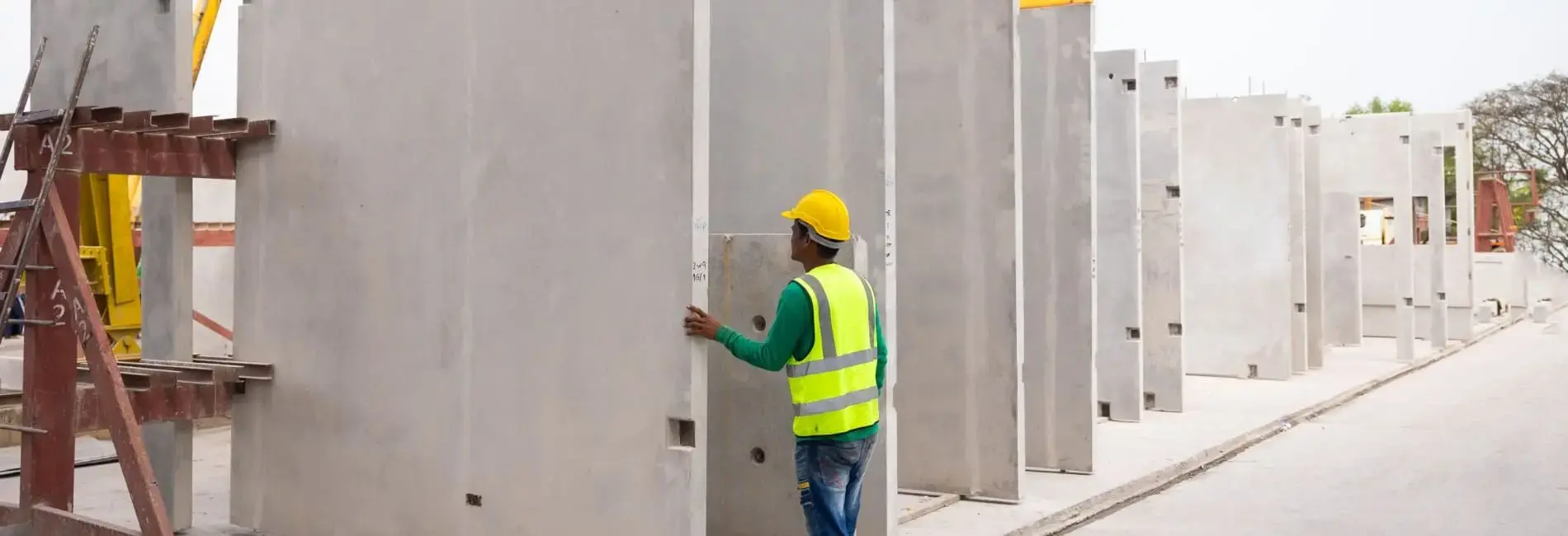A Better Understanding of the Concept of Precast Construction

The construction industry, an often-belabored behemoth of innovation, routinely spews out methodologies that redefine how our modern skylines paint the horizon. In the realm of modern construction, precast construction stands out as an innovative and efficient method. It breaks the long-standing status quo of the mundane cycle of erecting frameworks, pouring concrete, and setting steel. Civil engineering professionals and architects are now beginning to appreciate the elegant precision of precast construction methods. Join us in exploring and understanding the intricacies and advantages of precast construction and its growing significance in the construction industry.
What Exactly is Precast Construction?
In a nutshell, precast construction is the process of creating a building or structure using components that are cast in a reusable mold and cured in a controlled environment, such as a factory or casting yard. Once they have achieved their required strength, these elements are transported to a construction site for assembly. This method, minimalist in approach, has risen in popularity due to its ability to reduce on-site construction, ease project timelines, and enhance quality control.
Precast isn't a novel concept; it dates back to the Roman era when aqueducts and bridges were prefabricated off-site and then assembled at the required location. However, the current application of this approach in modern construction has reached remarkable refinement.
The Sturdy Foundation of Precasting
When you build beyond the fundamentals, precast construction is not just a method—it's a mindset. It commences with meticulous design, demands precision in material formulation, and hinges on factory-line proficiency. The resultant precast concrete structures are not merely scaled projections from blueprints. They are testaments to the potential of modular efficiency in the built environment.
But what makes this process so appealing to industry professionals? The answers are more straightforward than you think.
Precision fabrication
Every single piece of precast structure is crafted with a level of detail that transcends the on-site capabilities of traditional construction. Molded under controlled conditions, these components boast precision and uniformity that are hard to achieve in the rough-and-tumble environment typically found at ground zero of a construction project.
Streamlined Assembly
Imagine a temple built not by chiseling stone on-site, but by assembling interlocking parts. That's the essence of precast construction—time on the ground is minimized, and cutting-edge tools maximize efficiency, leading to fewer man-hours, and often less time-sensitive material waste compared to its in situ counterpart.
Permanent Versus Temporary
In the tug-of-war between permanent versus temporary construction, precast wins resoundingly. These structures are designed to serve on a long-term basis, yet maintain a level of adaptability that allows for future changes or expansions with relative ease.
The Ripple Effect of Precast
The implications of precast construction extend well beyond the immediate work zone. The methodological shift towards precast is not just limited to the construction industry. It cultivates a fertile ground for a social and environmental ripple effect.
An Altered Industry Landscape
The introduction of precast construction has redefined what it means to build a project. In its wake, it has spawned a new industry within an industry—ones that revolve around optimizing precast elements and pre-empting project needs without the hubris of inaccuracy.
A Reduced Carbon Footprint
Compared to traditional construction methods, precast is a paragon of environmental prudence. It's like comparing a bicycle to a motorcar—yes, they both can take you places, but the former leaves a lighter tread on the planet.
Cost Efficiency
The edge that precast has forged with its quick assembly and reduced site work resonates down to project cost. It offers savings in terms of labor, on-site management, and is often less capital-intensive due to fewer errors and reworks.
Case Studies and Enduring Elegance
Precast structures stand as testaments to their legacy, as seen from urban cityscapes to the bucolic beauty of a countryside retreat peppered across the globe. They embody modernity's symphony with nature and ally with the environment through structures that don't just shelter but endure.
Iconic Structures
From the soaring heights of skyscrapers to the serpentine roads of subterranean tunnels, precast has made its mark on some of the most awe-inspiring projects in recent memory. These aren't just buildings; they are statements on the present punctuating the ethos of what the future could be if we chose to build it differently.
Functional Beauty
It takes the patient artistry of a sculptor to create a column, but to do so a thousand times, all identically, beholds an elegance that is functional yet aesthetic. Precast structures mirror this robust beauty—standing in congruence with purpose and the eye of the beholder.
Trends to Watch
Modular and composite precast elements that push the boundaries of design and sustainability, all while maintaining a competitive edge in cost and construction time, are trends that are not just on the horizon but are being actively woven into the industry fabric.
Growth Opportunities
The growth potential for precast construction stretches from the world's burgeoning megacities to its quiet hamlets. There's an expanding demand for robust, sustainable, and aesthetically appealing structures that only precast construction can offer.
The tale of precast construction is one of slow and sure ascendancy—a practical and aesthetic proposition that has caught the poise of the professional and the patron. Its advantages, its challenges, and its promise are the threads that weave this blog post into the larger narrative of the construction industry's unceasing evolution. But consider this article a prelude to a larger conversation. Step into the discourse, question, challenge, and explore. The future of construction is precast, and the future is now.

Keith Fink
Keith is the Franchise Brand Manager at NY Engineers, Keith is all things related to our project portfolio, brands and all things you need to know before we start your project.
Join 15,000+ Fellow Architects and Contractors
Get expert engineering tips straight to your inbox. Subscribe to the NY Engineers Blog below.

